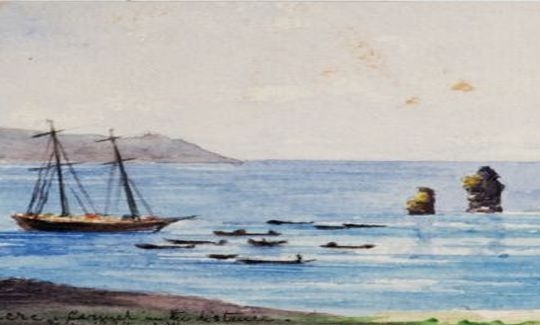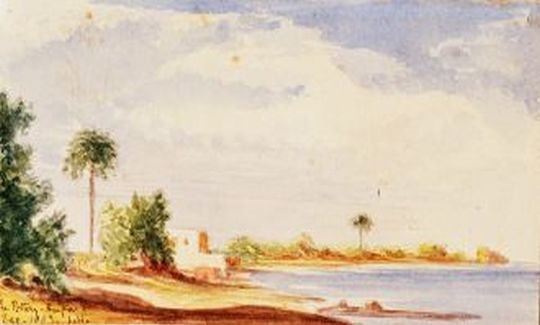In the 19th century, with the revival of interest in studies and research concerning the Holy Land, there was a considerable increase in the number of Christians from Europe and North America who visited the country. The landscapes of Genesis, the historic and sacred sites, and even the simple life attracted many travellers and artists.
At the beginning of that century, Palestine was a neglected outpost of the Ottoman Empire. Nonetheless, political and security conditions allowed many western tourists access to these remote places. Professional and amateur artists depicted the country on postcards, and travel books were usually illustrated with artistic representations. The term for western artists depicting such scenes at that time was Orientalists, and hence their genre was known as Orientalism. In this art, which was basically religious or derived from religion, scenes of life in oriental landscapes often provided the background for stories from the Bible and the New Testament. Western artists visiting the country in the 19th century believed that their renderings of oriental scenes were, somehow, authentic representations of the Bible stories.
Due to the flow of visitors, the few earlier depictions of the Holy Land - mainly old engravings - were supplemented by more accurate and detailed works, presenting not just the holy sites of Christianity but also the country itself and its inhabitants. The artists depicted the Orient in all its aspects.
Jamesina Styleman was born in 1842, in Hunstanton, Norfolk, England, and died in 1912, in Norfolk. She was the sister of Alice Oliphant, and married Adolphus Waller, vicar of Hunstanton. The sisters Jamesina, Alice, and Ada were brought up in the Anglican tradition, but also studied science, art and music. Their father, Henry Styleman, was Master of Hunstanton, and was mainly occupied with refurbishing churches and restoring paintings. Alice Styleman married Laurence Oliphant in 1872, and the couple set out to implement the return of the Jews to the land of Israel, which Oliphant himself had envisioned. They departed in 1882, and settled in Haifa, where they were visited by Jamesina and her husband, who planned to tour the country with Laurence and Alice and then return to England. For several weeks, the two couples toured the north of the country and the area round the Sea of Galilee, sleeping in tents and travelling on horseback, and the sisters sketched and painted.
Alice died of malaria at her house in Daliat-al-Carmel on January 2nd1886. Jamesina remained in the country for an extended period, and continued to tour and to paint. Perhaps she also returned to the Holy Land later, since some of the works in this exhibition were published in 1888, as illustrations for an essay by Laurence Oliphant.
Jamesina Waller's paintings are obviously orientalist. She seems to have been attracted by mountains, deserts, water, vegetation, mosques and their domes, the light, antiquities, and biblical landscapes. In many of the works the Mediterranean Sea, the Sea of Galilee or the River Jordan appears. She was curious about the local inhabitants who looked, to western eyes, exotic and colourful. Her works combine labour with scenery, giving a sense of activity to the biblical landscapes that sometimes seemed so barren. The paintings are efforts to experience and document landscapes with soft, broad areas of colour. She signed her works with her initials, together with the month and year. It is evident that Jamesina had a good grounding in art, and painted and sketched in the classic mode.
Attribution of the works derives both from the signature J.W., confirming that she actually visited the depicted sites, and from a letter by Oliphant attesting that Alice and Jamesina painted together during their travels.
The works in the exhibition have been presented to the National Maritime Museum in memory of the late collector Nathanial Amits-Lev, by his daughter Iris Amits-Lev. Special thanks are due to the artist Pnina Gagnon, without whose ongoing support and encouragement this important and rare addition to the National Maritime Museum's collections would not have been donated.


